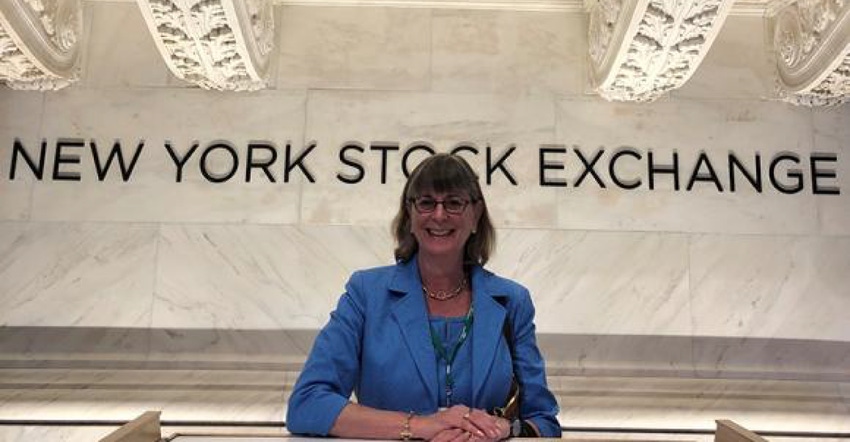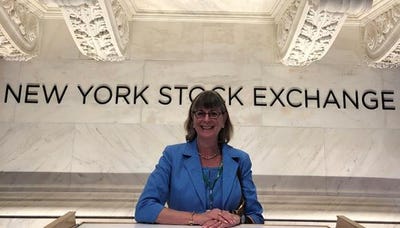Solid Waste Companies to Present Their 2022 Outlooks

In February, the publicly-traded solid waste companies will report fourth quarter 2021 results and unveil their 2022 outlooks. In this edition of Business Report, we preview the reports and lay out our best “guesstimates” of what the companies may project.
Pricing Expected to Accelerate; Volume Likely Still Elevated
Particularly in light of current inflationary pressures, pricing expectations for 2022 most certainly will be higher than the 2021 projections. Waste Connections (WCN) has been most explicit, guiding to 2022 pricing of 5.5%-6.0%, versus recent (third quarter 2021) pricing including surcharges of 5.1%. Waste Management (WM) and Republic Services (RSG) may project yield levels approaching 3.5%, but certainly north of 3%. All the management teams have expressed their confidence that they will be able to price to cover inflation, so there is likely to be dynamic pricing in the open market, with the added help (finally) from the higher 2021 inflation levels now getting baked into CPI-linked pricing, particularly in the second half of 2022. WCN has noted that this could add 1.5% to pricing within its exclusive (or franchise) markets.
Although the Omicron variant adds some uncertainty to the near-term outlook, in general, volume projections are likely to be higher than “normal” levels of 0.5%-1%, yet likely below the economic recovery fueled levels of 2021. Volume projections in the 1%-2+% area are likely to be most typical. GFL Environmental (GFL) may have the most potential for volume upside, given its large Canadian presence (about 40% of revenues), where the pandemic lockdowns have been most prolonged and pervasive.
Commodity Related Pieces of the Business Look to be at Least a First Half Tailwind
To gauge the prospects for recycled commodity price impacts on 2022 results, we track RISI’s monthly old corrugated cardboard (OCC) data, and baseline December’s average figure forward into 2022, which is typically what most of the management teams do as well. Although OCC pricing peaked in September at around $167 per ton and has fallen to around $137 per ton in December, the steady rise through the first three quarters of the year implies that recycled commodity prices will be first half tailwind, and overall would be a net positive for the year (given the aforementioned assumptions), as OCC averaged $119 per ton in 2021, versus the December level of $137 per ton, indicating a 15% year-over-year increase from 2021 to 2022. Obviously, that will not be the benefit to the companies as was the case in 2021, but still a material help. Recycled plastics, an increasingly important and valuable part of the recycled waste stream, followed a similar trajectory. HDPE pricing has had a particularly sharp pullback in the fourth quarter, with PET recording a smaller retreat. That said, there seems to more confidence than in prior years about the sustainability of higher recycled plastic pricing, given the brand companies’ commitment to increasing recycled content in their feedstock, particularly in California where it is mandated. As a result, a further sustained or dramatic falloff is generally not forecast—higher lows than in prior cycles are still expected. New capacity coming on line at domestic paper mills in 2022 also underpins a similar belief for recovered paper pricing. Given the steady climb in renewable energy (RINs) pricing throughout the year, if current RINs pricing of just above $3.60 holds, it should also prove to be a material tailwind throughout the course of the year, with current levels almost 20% above the 2021 average.
On the other hand, the sustained increase in crude oil prices throughout 2021 is obviously a negative in the form of higher diesel prices for the industry. However, all the companies have put in place comprehensive fuel surcharge programs, which effectively cover the fuel cost increase, though they act as a margin depressant.
Margins Largely Expected to Improve Modestly, Despite Inflation
Even the Federal Reserve has dropped the word “transitory” with regard to inflation, and inflationary pressures are expected to last at least through the first half, if not through all, of 2022. Although several management teams have expressed confidence (or hope) that the acute labor shortages they experienced had peaked in the third quarter of 2021, wage inflation, and to a lesser extent, other cost pressures due to supply chain bottlenecks are expected to persist in 2022. All that said, most management teams are confident that both industry pricing discipline and their own concerted efforts will allow them to price for inflation and potentially even eke out modest margin gains in the rough average range of 30-50 basis points, though there is a general expectation among analysts that WM will experience some margin pressure in the first half of the year before its pricing catches up with elevated costs. Margins are also expected to be aided over time by an intense focus on productivity enhancement and labor-saving capex spending—notably on robotics and optical sorters in the material recovery facilities (MRFs) and automated side loaders in the collection line.
Free Cash Flow Expected to Improve Despite an Acceleration in “Green” Capex
The solid waste industry is again expected to grow free cash flow (FCF), which has become a hallmark of the industry. This comes despite across the board increases in “green” capital expenditures (capex). First, all the companies have announced accelerated timing or a larger number of landfill-gas-to-energy (LFGTE) projects, particularly supported by the current, elevated level of RINs pricing. GFL recently announced a joint venture with OPAL Fuels for the development of two renewable natural gas (RNG) facilities and plans for four additional RNG plants to be announced in the near to intermediate term. Additionally, most of the companies are talking about increased investment in recycling, with WM in particular talking about an acceleration in its recycling investment to $200 million in 2022, versus more typical levels of $100 million in prior years.
M&A Activity Not Likely to Slow as Much as Previously Expected
2021 is shaping up to be a blowout year for acquisition activity, as expected. However, the feared increase in the capital gains tax rate has not yet materialized, and it was often cited as a driver of merger and acquisition (M&A) activity. That, combined with labor and technology pressures are expected to continue to put pressure on private haulers to sell, and as a result, another strong year of M&A activity now looks likely, versus the potentially sharp slowdown in 2022 that was originally feared. Companies are likely to project their more “normalized” levels of acquisition activity in 2022, but now with greater likelihood of potential upside. WCN has recently referenced that the number of West Coast sellers has increased, likely also indicating continuing generational issues or drivers, while RSG has expanded its targeted acquisition pool beyond solid waste companies and into environmental services.
Legislative and Regulatory Drivers
The recently passed infrastructure legislation is expected to be a positive driver for soil jobs and special waste. Interestingly, it also provides $1 billion for Superfund cleanups, which has been a moribund spending area for years. The recycling funds within the infrastructure package seem more targeted to municipal programs. Further consideration of extended producer responsibility (EPR) and/or container deposit legislation is expected to pick up in the wake of such programs passing in Maine, Oregon and Connecticut, with EPR legislation now likely to be under consideration in 13 states in 2022. PFAS is also likely to remain front and center in the solid waste news, but based on the EPA roadmap that has now been laid out, it would appear no material action (from the federal side) is likely before 2023.
About the Author(s)
You May Also Like




